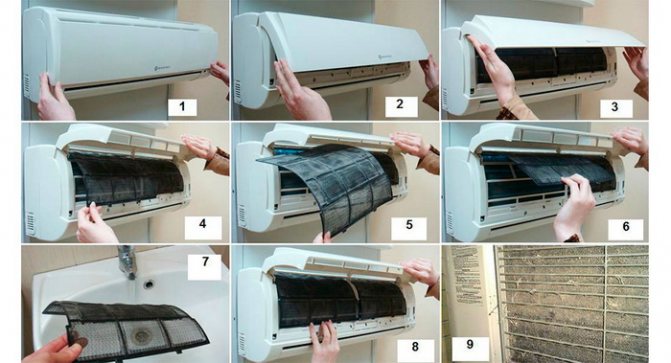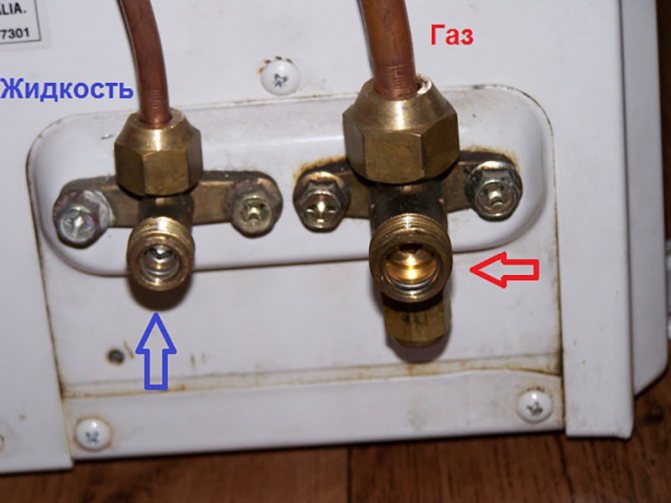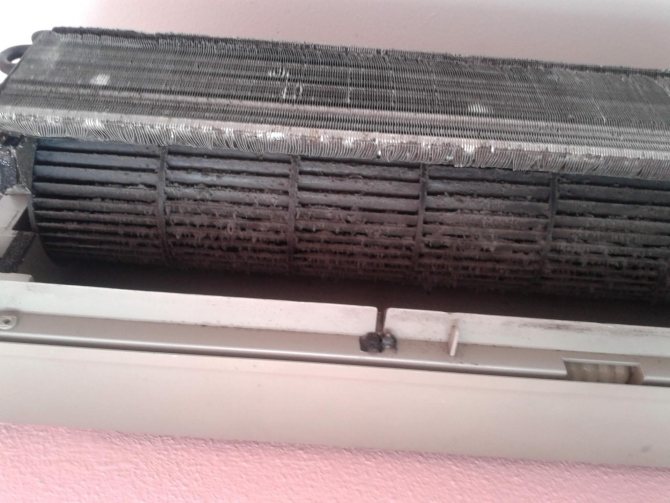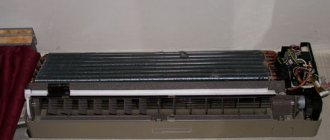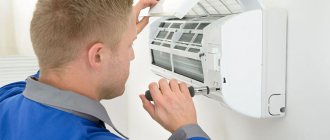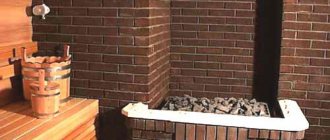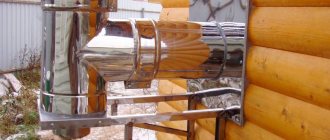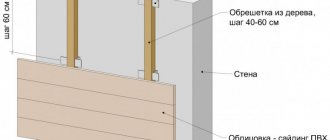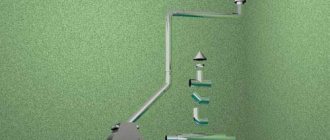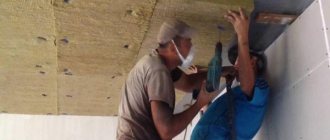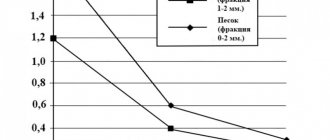How often should the air conditioner be cleaned?
Experts recommend cleaning the indoor and outdoor units of the air conditioner twice a year - before summer and after the end of the season. If you use a split system for heating, you will need to clean it before and after cold weather.
You should also clean the air conditioner if the following symptoms appear:
- The blowing speed has decreased;
- The air conditioner is noisy or there are extraneous sounds;
- There is a bad smell in the room;
- Water drips from the indoor unit;
- The device began to cool or heat worse.
If the outdoor unit of the air conditioner is at a level of 10 meters (4th floor) or lower from the ground, it must be cleaned once every 2-3 months during the season. At low altitude, it quickly becomes clogged with dust, insects, leaves.
Air conditioner cleaners
There are special products for washing air conditioners. On store shelves, they are represented by a wide assortment. These are mainly aerosols and foam in cans. They are used to clean the heat exchanger and drainage system.
Aerosols and sprays
How to clean:
- The air conditioner is turned on at low power.
- Spray the aerosol through the holes onto the heat exchanger.
- Wait 10-15 minutes for the purifier to operate.
- Ventilate and dry the device in ventilation mode (see also - what are the modes in the air conditioner).
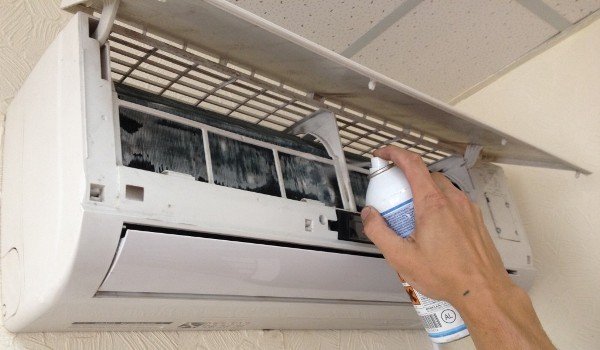
Some products must be washed off additionally from the heat exchanger, the manufacturer must indicate this on the packaging.
Less funds: They are quickly consumed - on average, they are enough for 2 cleanings, and with heavy pollution, they do not always cope with the task at all.
Foam
Foam is more often used to clean only the heat exchanger. How to clean:
- Shake the can well.
- Spray evenly onto the heat exchanger.
- After a while, it turns into a liquid and, together with impurities, goes into the drainage system.
- After cleaning, turn on the ventilation to dry.
Step-by-step instructions for cleaning the indoor unit
In order to clean the indoor unit of the air conditioner you will need:
- Vacuum cleaner;
- A basin of water;
- Dish detergent;
- A container with clean water;
- Soft rags (preferably lint-free);
- Toothbrush (or any other);
- Soft brush (paint brush is suitable);
- Crosshead screwdriver;
- Thin rope, wire or easily bendable wire (40-50 cm).
We disassemble the indoor unit
Be sure to disconnect the air conditioner from the mains! Open the indoor unit of the air conditioner. To do this, click on the plastic clips that are on its side walls (see photo). Take out the mesh filter.


Indoor unit cover latches.
After that, unscrew the screws that secure the air conditioner case to its inner part and remove it. In some models, you need to pull it up to do this, but mostly it will feed itself.
Important!
The power supply cable and wires are connected to the display on the case. To avoid breaking them, tie the case to the inside of the air conditioner with rope or wire.
Cleaning the filter
- Thoroughly rinse the filter of the indoor unit of the air conditioner with running water to wash off the main dust and dirt.
- Then dilute the detergent in a bowl and put the filter in it. It should "sour" for 20-30 minutes to finally be cleansed of impurities.
- Rinse it again with running water.
- Leave the filter to dry - it must not be installed wet in the air conditioner.
Cleaning the radiator
Vacuum the radiator without the nozzle first.At the same time, be careful - the vacuum cleaner pipe should not touch the plates so as not to damage them. After that, go between the plates with a soft brush to remove any remaining dirt.
How to clean the indoor unit of the air conditioner: detailed instructions (+ video with disassembly)
Instructions for complete cleaning of the indoor unit:
- The device is disconnected from the network.
- The front panel (cover) is removed. To open it, you need to pry the panel and pull it towards you and up. This is how almost all household air conditioners open.
- The filter is taken out.
Let's make a digression - we will list the types of filters and the features of their cleaning:
- Coarse filter - fine-mesh polymer mesh, retains dust, fluff, animal hair. Located just behind the front panel. With frequent use, it can be cleaned every 2-3 months. You can wash the mesh under running water from the tap, but you cannot wipe it off - the filter should dry out naturally.
- Coal - removes unpleasant odors. It is not cleaned, it only needs to be changed.
- Zeolite - absorbs chemical compounds from the air, neutralizes unpleasant odors. Can be washed under the tap.
- Electrostatic - cleans from small dust particles (more efficient than a coarse filter). Can be washed under the tap.
- Plasma - also cleans the air from small dust particles (the principle of cleaning is different from electrostatic). Brushable.
- Photocatalytic - Traps all types of contaminants, including mold spores and unpleasant odors. Can be washed under the tap.
After removing the filter, we continue cleaning the indoor unit:
- We take out the condensate tray and clean the drainage (how exactly - read below).
- We remove the main body. In some models, it is held on latches, in some - on self-tapping screws. Self-tapping screws can be covered with decorative plugs. The case also gets dirty - therefore, after removing it, we also clean it (you can simply wipe it with wet alcohol-based wipes).
- Medical shoe covers are put on the electronics unit to protect it from moisture.
- The wall under and next to the air conditioner is sealed with polyethylene (or a service package is attached to the wall). The wall must be glued over the entire height (from the air conditioner to the floor). The floor is also covered with polyethylene, and covered with rags (since dirty foam and water will drain from the unit when washing).
- If dust is visible under the body, it can be immediately removed with a vacuum cleaner or shaken out with a long-bristled brush.
- All surfaces that were hidden under the block are washed with a disinfectant (purchased or prepared). The most thorough thing is to wash the fan blades and the radiator (especially between the fins). If you are using a commercially available disinfectant, the foam does not rinse off immediately after application. Wait 15-25 minutes for the foam solution to soften the dirt.
- The foam rinses off. You can use a regular spray bottle with clean water. First, the radiator is washed from the chemistry, then the fan blades. If you have a steam generator, you can use steam instead of water.
- All parts dry naturally.
- The indoor unit is assembled in the reverse order: the case is installed, filters are installed, the front panel is attached.
- The device is connected to the network and turned on - for verification.
Drainage system cleaning (+ video)
The diameter of the drainage tube through which the condensate flows into the street is about 1 cm.
It can become clogged due to dust, pet hair, poplar fluff. You can clean the drainage both together with a complete cleaning of the air conditioner, or separately.
How to clean properly:
- The device is disconnected from the network.
- Removable cover and filter.
- A drip tray is taken out to collect the condensate.
- The drain hose is disconnected from the pallet.
- The tray is washable (since the water in it is usually dirty and streaks remain on the walls).
- The drain pipe is blown out with a vacuum cleaner.If it is seriously clogged and purging does not help, you can pour warm soapy water or liquid for cleaning the air conditioner into it, and purge it again after 10-20 minutes.
Self-cleaning of the outdoor unit of the air conditioner
If you have access to the external unit, it will be much easier to clean it than the internal one. For this you will need:
- Spray;
- Dish detergent;
- Capacity for water;
- Crosshead screwdriver;
- Soft paint brush;
- Vacuum cleaner.
The main elements of the outdoor unit of the air conditioner that need cleaning are the radiator and the impeller (fan). To access them, completely unscrew the screws securing the case and remove it from the bed.
The first signs of air conditioner contamination
During operation, accumulated dirt and dust impede the operation of the air conditioner. Characteristics, efficiency deteriorate, air purity decreases. The quality of the incoming air directly affects health, because particles of mold and bacteria enter the room. As a result, allergic reactions and coughing can occur.
To maintain a healthy and comfortable microclimate in the apartment, the split system is regularly cleaned. The frequency depends on how intensively the climatic equipment is used. But besides this, there are pronounced signs indicating that the air conditioner is dirty.
What you need to pay attention to first of all:
Bad smell appearing after switching on the split system. The most obvious sign of contamination. This may be due to accumulated dust on the heater grate or interrupted drainage.
Knocking and crackling sounds when the equipment is operating. In this case, the turbine or filter may be clogged. If hum and loud noise are heard in the outer case, then there is a blockage in it. Something prevents the fan blades from rotating freely and they touch the walls or trapped deposits.
Increased energy consumption while reducing the power and speed of cooling or heating. It is necessary to open the panel of the indoor unit of the split system and clean the grille and the elements of the case.
The sound of gurgling liquid, indicates a drain failure or refrigerant leakage. Condensation leakage is also a clear sign of contamination and the need to urgently clean the air conditioner from dust.
If you notice at least one of the above signs, you need to immediately call the wizard to clean the split systems or do all the work yourself. We will look at how this can be done in order.
The key to your health is the disinfection of the air conditioner
Professional cleaning products can easily remove dirt from the interior and exterior of the air conditioner. But this does not mean that they will be able to kill microflora and microbes. Therefore, after all work, you need to disinfect all parts of the air conditioner.
Chlorhexidine is best for this. It is an inexpensive disinfectant that can be purchased at any pharmacy.
Chlorhexidine is a medicinal product, antiseptic, in finished dosage forms it is used in the form of bigluconate. Chlorhexidine has been successfully used as a skin antiseptic and disinfectant for over 60 years.
Wikipedia
They need to process all parts and assemblies of the indoor unit of the air conditioner, as well as the drainage system. To do this, you can use both a rag and a spray bottle. The only thing I want to warn against is to prevent the drug from getting on electronic circuits and in the places where wires and cables are connected.
Who does the cleaning professionally and how much does it cost?
Cleaning services are provided by companies engaged in the repair and maintenance of HVAC equipment. How much does the procedure cost - about 1500-2000 rubles (both for the office and for apartments / houses).
The package usually includes:
- Indoor unit cleaning (disassembly, cleaning of all internal elements and filters, assembly).
- Cleaning the outdoor unit, provided that it can be reached from the window.
- Antibacterial treatment of the evaporator.
- Cleaning the drainage system.
Additionally, a specialist can diagnose and refuel the air conditioner with freon (already at an additional cost).
Since the average citizen is unlikely to be able to clean the air conditioner correctly and efficiently on his own, it is better to contact a specialist. With your own hands, you can only clean the filter.
Why do you need a screen for an air conditioner, and how to make it yourself?
What is a cabinet air conditioner: overview, scope, functions
Similar posts
A guide to self cleaning your air conditioner at home
Companies involved in the installation of climate control systems offer services for their maintenance, including cleaning. Calling a specialist is not cheap, in most cases this process can be easily done on your own.
Recommendations for cleaning the outdoor unit
The outdoor part of the fan should be cleaned 1-2 times a year. The main part of the pollution is leaves, small branches, poplar fluff, insects. Their presence interferes with the normal operation of the heat exchanger and leads to overheating and compressor failure. Replacing this part is expensive, so it is advisable to remove dirt from the outdoor unit before spring and autumn.
The cleaning process consists of several stages:
- removing the case;
- manual removal of coarse dirt;
- fine particles and dust can be removed with a car or conventional vacuum cleaner;
- cleaning the fan blades with a damp cloth or sponge. The procedure must be carried out carefully so as not to damage the electrician;
- rinsing the radiator fins with a jet of water from a car wash or regular water supply.
After that, all parts are wiped off with a dry cloth. The assembly of the block can only be done after the surfaces are completely dry.
If the air conditioner is installed on the second floor or higher, it is better to entrust the process of cleaning the outdoor unit to a professional team, since this work requires special equipment.
How to clean the indoor unit
The working part of the split system, which is located indoors, needs more frequent flushing. Most of the dirt in this unit is house dust, skin particles and fat deposits, so the cleaning process is a little more difficult.
Before starting work, you must turn off the system and remove the housing cover. She also needs to be cleaned, but this is done rather for hygienic purposes, dirt is removed with a soft damp cloth.
Filters
Air conditioners can be equipped with 2 types of filters:
- mesh (flat or curved) - a common lattice with thin cells that retains dust;
- pocket. It has several levels of cleaning, expensive models are equipped with it.
The filter cleaning algorithm is as follows:
- dismantle the filter element (how to do this can be found in the instructions for the split system);
- remove dust with a brush or vacuum cleaner;
- soak the filter in warm water with detergent;
- rinse out of the shower head;
- if there were traces of mold on the filter, treat it with an antiseptic (you can use special fluids for conditioners or ordinary chlorhexidine);
- air dry;
- fix the filter in the same place.
Pocket filters are not cleaned, but replaced with new ones. You can buy them in specialized stores.
It doesn't take much skill and time to clean the filter. It is recommended to carry out this process as soon as it gets dirty, on average once every 2-6 weeks.
Evaporator and radiator
The heat exchanger of the air conditioner can only be cleaned superficially by yourself. The removal of dirt inside them must be entrusted to a professional.
I would like to note that regular cleaning of the surface of the radiator and evaporator will significantly postpone the period of contacting the service department and save a hefty part of the budget.
The algorithm of actions is as follows:
- removing the housing cover, protective grill and filter elements;
- Removing dust accumulations using a small paint brush or vacuum cleaner. The thin plates of the heat exchanger are easy to damage, so the movements should be light and directed from top to bottom;
- To remove mold and mildew, turn on the recirculation mode at the lowest temperature and spray an antiseptic liquid near the radiator.
- reassemble the air conditioner in reverse order.
It is sufficient to clean the heat exchanger in the air conditioner once a year. If traces of corrosion are found during processing, you need to call specialists from the service center to check and adjust the level of freon or replace the part.
Drainage system
The drainage system in the air conditioner removes the condensate formed during air cooling. It consists of a shallow pan and a hollow tube through which the liquid is discharged to the street.
Together with the condensate, dust, wool gets into the sump, and sometimes mold forms there. If you do not systematically clean the drainage system, the drainpipe will clog and the air conditioner will leak and give off an unpleasant odor.
The process of cleaning the drainage system is carried out as follows:
- removing the outer casing of the air conditioner;
- disconnection of the pallet and tube fasteners, followed by the removal of parts;
- the bath is washed with running water with a detergent and filled with an antiseptic (chlorhexidine can be used) for 15-30 minutes;
- you will need a vacuum cleaner to clean the drainage channel. It is turned on for air blowing and connected to the channel;
- filling the canal with chlorhexidine for 15 minutes;
- re-blowing.
When carrying out systematic cleaning of the air conditioner, you need to pay attention to the condition of all parts, including the body and seals. If damage is noticeable on them, you need to call specialists from the service center.
A guide for self-service of a split system in an apartment can be viewed in the video.
Preseason preparation
In addition to regular cleaning, it is very important to properly prepare the conditioner for active use. Summer is considered the traditional season for split systems, but some models are also used for heating rooms in winter.
In mid-spring or early summer (depending on the region), it is recommended to do the following:
- clean the heat exchanger in the outdoor unit;
- check the work in all modes;
- replace the air filters if necessary.
If the air conditioner does not have an all-season unit, it is used for heating at temperatures up to 30 degrees below zero. In late autumn or winter, all parts of the device must be inspected. The outdoor unit can be fitted with a heating device for the compressor and a "warm" drainage system.
Air conditioners provide a normal indoor climate. The use of air humidifiers in parallel with the split system will significantly increase the efficiency of the latter.
To improve the quality of work and extend the service life, it is necessary to carry out a preventive inspection at least once and, if necessary, clean contaminated or damaged parts. You can do it yourself, but this does not exclude the need for professional service. Any air conditioner loses at least 5% of coolant per year, its lack affects the operation of the entire climate system.
hozhack.ru
Air conditioner filter cleaning technology
The filter system in air conditioners and split systems is the most vulnerable part of the technology. The filter is like a fine mesh that is located under the front panel of the air conditioner.Through it, air enters the device. The mesh catches the smallest dust particles and protects both the air escaping into the room and various parts of the air conditioner, for example, the radiator, from pollution. The filters of the device should be flushed as often as possible. It is recommended to do this every 14-20 days. If your air conditioner works in an industrial area, then it is worth cleaning even more often. Before cleaning the air conditioner, remember to do it delicately. Under no circumstances should you roughly rub the filters or use household detergents. Firstly, if the air conditioner fails due to improper cleaning, it will not be repaired under warranty. Secondly, household chemicals will pollute the air that the device releases into the room. To clean the filters, follow these instructions:
- We open the top cover of the air conditioner. From there we take out the upper filters.
- Soak the filters in warm soapy water for 5-10 minutes. During this time, dust and grease should move away from the mesh.
- We clean the rotary fan, which looks like a roller. It displaces streams of cooled air from the device into the room. Dust and grease accumulate on the blades over time. Apply a solution of laundry soap to the blades.
- We cover the floor with cling film and turn on the air conditioner 5-10 minutes after applying soap to the blades. The device begins to clean itself of dirt.
- In this mode, the air conditioner should run for several minutes. Then we finish cleaning the blades with a brush until there is no dirt on them.
- We clean the ventilation holes located on the top cover of the device.
Useful tips for cleaning a split system
For the smooth operation of the air conditioner and compliance with all operating requirements, there are simple tips for the maintenance of equipment that must be followed.
1. The air conditioner is located in the apartment above the fifth floor, then cleaning can be done once a year. 2. For devices located on the tenth floor and above, this procedure can be done every two years. 3. Outdoor units of split systems installed in an apartment from the 1st to the 4th floor require cleaning every three months. 4. Regardless of the floor, indoor units must be cleaned at least once a month. When switched on regularly, dust particles accumulate on internal assemblies, surfaces and parts. This may not affect the operation of the device, but the purity of the air entering the room is significantly reduced. 5. To protect the outdoor unit from bad weather conditions: rain, snow, ice, it is recommended to install a visor. This solution will protect the device from damage and extend its service life.
Cleaners for air conditioners
Special solutions, the so-called "chemistry" for the care of the air conditioner, is presented in three forms:
1. General use. Designed for preventive treatment: condenser blocks, filters, internal surfaces. 2. Cleaner for the heat exchanger of the indoor unit. 3. Cleaner for processing the outdoor unit of the air conditioner.
All products are presented in the form of sprays or concentrated solution. These products disinfect surfaces, prevent the appearance of fungus, bacteria, mold, and salt deposits. When handling and spraying, it is necessary to observe safety measures, wear gloves, goggles and masks.
In what cases it is necessary to contact the service center
You can clean the air conditioner yourself at home and there is nothing complicated about it. However, in some cases, problems may arise in the operation of climatic household appliances, which cannot be eliminated on their own. Then you need to contact the repair and maintenance specialists.
When to call the master:
1. Spontaneous shutdown during operation. 2. For no apparent reason, the air conditioner stopped turning on. 3. Any functions provided by the manufacturer stop working. four.A running air conditioner does not cool or heat the air in the room. 5. Condensation stops flowing through the drain pipe.
The reasons can be very different - it is a breakdown of individual components, a failure in the electronics, a failure of the radiator. In any case, only a master will be able to replace and debug the work of a household split system. It is recommended to contact service centers where they service air conditioners of different brands: LG, Samsung, Gree, Mitsubishi Electric.
When is it necessary to clean the indoor and outdoor unit of the air conditioner
The equipment should be cleaned immediately in the following cases:
- The air conditioner started using more electricity.
- The climate system began to work worse or its power decreased.
- When the air conditioner is turned on, a characteristic crackling or loud noise is heard to the electricity. In this case, you should check the unit turbines or filters for clogging.
- During the operation of the equipment, condensation leaks from its external unit.
- An unpleasant and pungent smell that appears immediately after turning on the air conditioner. This is a warning that there is a problem with the drainage system or the evaporator grill.
- Gurgling or popping sounds that indicate that the drain is not performing well or the cooling system is losing refrigerant.
- The external unit emits a characteristic tapping, which means it's time to clean its case from clogging. The fan blades no longer spin or are caught on another object.
With a careful attitude to the air conditioner, it will work its entire operational life without repair, which is about 11 years of ideal work.
What is cleaning for?
Cleaning the home climate system is necessary, first of all, to preserve the health of residents, and only then - for the high-quality operation of equipment. The influence of cool, but saturated with pathogenic microorganisms air does not manifest itself as quickly as a breakdown of climatic equipment, an unusual smell, leakage, the appearance of mold on the module.
These unpleasant consequences arise due to the multiplication of parasitic microorganisms, the accumulation of bacterial colonies and the appearance of a fungus on this soil, the spread of mold fungi, rotting inside a warm, humid environment of small particles of dust, animal hair, etc.
The decision to clean the air conditioner is made precisely after the appearance of the above signs of a malfunction of the air conditioner. But this is just an extreme degree of pollution that has been accumulating for a long time, poisoning the driven air.
If the tenants are relatively healthy, the impact of a damaged split system will not be felt immediately. It will be more difficult for asthmatics, people who have problems with the respiratory system, cardiovascular diseases - they will quickly feel the difference in the operation of dirty equipment.
To prevent an extreme situation, it is necessary to regularly clean the entire climate system. This will help preserve the health of people living in the apartment, extend the service life of electrical mechanisms, and create optimal microclimatic conditions every day.
Algorithm for antibacterial treatment of the air conditioner >>>
Automatic cleaning of the air conditioner
Most of modern air conditioners and split systems have advanced functionality, which includes an automatic cleaning system. It is done in a simple way: the air flows are idle through the system. In this way, drying of the heat exchanger and various internal parts of the device is achieved. Some newer models of air conditioners use an ionic air purification system. A special device helps to bind nitrogen and oxygen ions with dust particles, thus they are charged and "caught" by the dust collector. Some other models use ionized mist in their work, as well as systems of ionization of air masses and multi-stage filtration.If the air conditioner has a built-in touch sensor, then the device can independently take into account the composition of the air and start the self-cleaning system at the required moment. Maintenance of the latest generation air conditioners has been greatly simplified. However, remember that no device can reach the filters and wash them with soapy water! Therefore, even innovative systems need manual cleaning.
How to clean the outdoor unit of the air conditioner?
Most often, the outer element is clogged with fluff during the flowering of poplar, dust from the street, sand carried there by the wind. If the house is located on a motorway, on a street with active traffic, the outer body of the block, internal parts are covered with soot and soot.
Over time, these impurities adhere to the blades of the fan, compressor, condenser in a dense layer, hindering their operation. The heat exchange process is disturbed, since the adhered dirt does not allow the refrigerant to cool effectively. This leads to an increase in energy consumption during the normalization of heat transfer work, wear of the internal parts of the device.
Important! DIY antibacterial treatment of the air conditioner >>>
Mechanical flushing of the outdoor module of the split system is sufficient to maintain cleanliness and proper operation. Let's define a few recommendations on how to clean the outdoor unit:
- Disconnect the equipment from the power supply before starting cleaning work.
- Remove the outer metal casing.
- Remove large debris (feathers, fluff, leaves, small branches) with a brush, an autonomous compressor unit.
- Use a vacuum cleaner to clean fine dust deposits of hard-to-reach parts, or blow it out with a compressor.
- Clean fan blades.
- With a strong pressure of water, rinse the plate condenser from dirt with a steam generator.
- After drying all the elements, put the module case back.
- During cleaning work, make sure that moisture does not get to the electrical unit.

